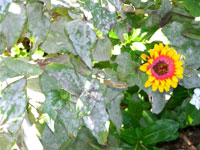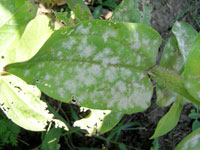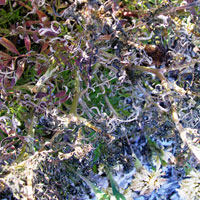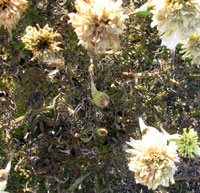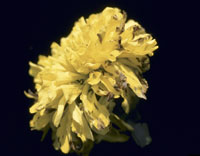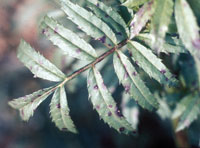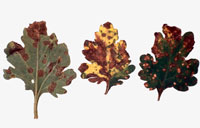Extension > Garden > Diagnose a problem > What's wrong with my plant? > Annuals and Perennials > Marigold > Discolored or spotted flowers
Marigold > Flowers > Discolored or spotted flowers
1 of 4
Powdery Mildew
Golovinomyces (syn. Erysiphe) cichoracearum
- Powdery, fluffy white spots and blotches on leaves, stems, and flower parts
- Tiny black round spheres may be visible within white spots late in the season
- Spots typically start on lower leaves but can spread to cover the entire plant
- Severely infected leaves may be completely covered in white or grayish white fungi
- In some cases, leaves become curled or twisted or turn yellow due to the infection
- More information on powdery mildew
2 of 4
Gray Mold
Botrytis cinerea
- Irregular brown spots on leaves
- Brown blossoms or petals; flowers drop off prematurely
- Gray fuzzy mold develops on rotted tissue under humid conditions
- Disease develops during cool, wet weather
- More information on gray mold
3 of 4
Cold Damage
- Leaves look water-soaked and soft, then turn black
- Injury appears immediately
- Occurs at temperatures below 50° F
- More information on cold damage
4 of 4
Leaf Spots
Alternaria sp., Septoria tageticola
- Spots on leaves, stems, and flowers
- Spots vary in size and color, may be irregular to oval in shape, and may or may not have purple margins
- Centers of leaf spots may be speckled with tiny black dots
- Disease starts on lower leaves and progresses upward
- African marigold varieties are the most susceptible to leaf spots
- More information on leaf spots




